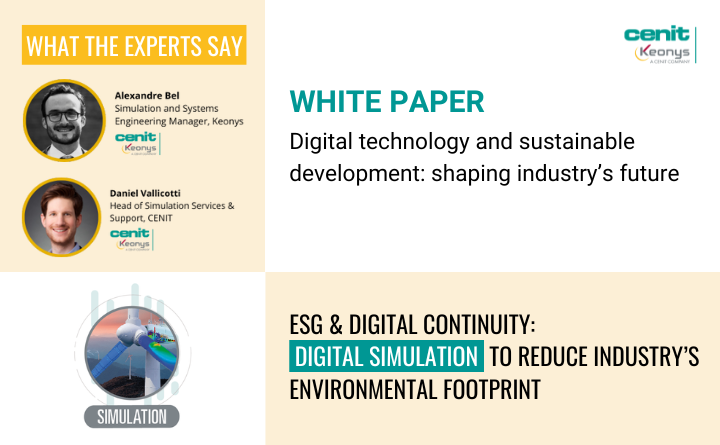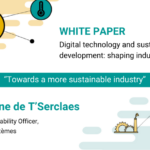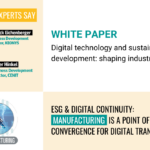PART 2: DIGITAL SIMULATION TO REDUCE INDUSTRY’S ENVIRONMENTAL FOOTPRINT
Product performance, limiting the number of physical prototypes, digital simulation is being used in many disciplines to boost innovation: structural and fluid mechanics, multi-body dynamics, electromagnetic fields, etc. By bringing together all the data in a single source known as the “3DEXPERIENCE platform”, engineers can design and test a product using a digital twin to minimize its carbon footprint. Interview with our two experts: Alexandre Bel, Simulation and Systems Engineering Manager, Keonys and Daniel Vallicotti, Head of Simulation Services & Support, CENIT
Digital simulation: a win-win for all?
In the fields of fluid management, electromagnetism, acoustics, chemistry and thermodynamics, digital simulation is now ubiquitous. “Yet digital simulation is used in all industry sectors today and not just to evaluate mechanical stress and deformation. Digital simulation does what it promises, which is to help us understand, analyze and predict physical phenomena.” Easier use of digital simulation from the start of product design expands the scope of possibilities with a view to optimizing each stage of the ideation process.
Simulation and digital twins for a more sustainable future?
Limiting our environmental footprint is no longer an option. It is an ethical and economic necessity. The combination of simulation and the digital twin applied to systems will help to reduce the amount of material used to produce them. “Thanks to its specific features, digital simulation makes the innovation process quicker and more seamless — it also reduces the environmental impact because fewer prototypes are needed”.
It is currently difficult to accurately assess the gains in terms of resource saved compared with the energy used by digital simulation. But “limiting the number of iterations, optimizing the use of materials and extending product durability have real benefits for the environment.”





